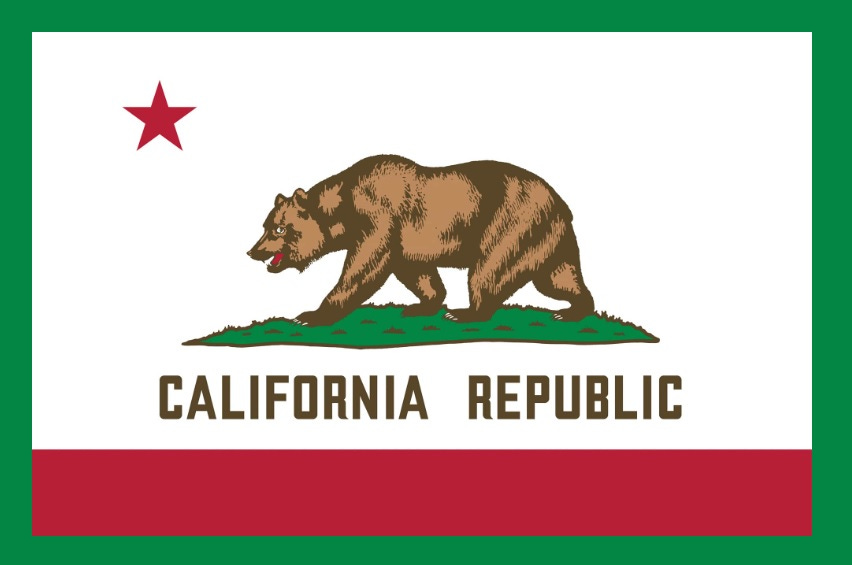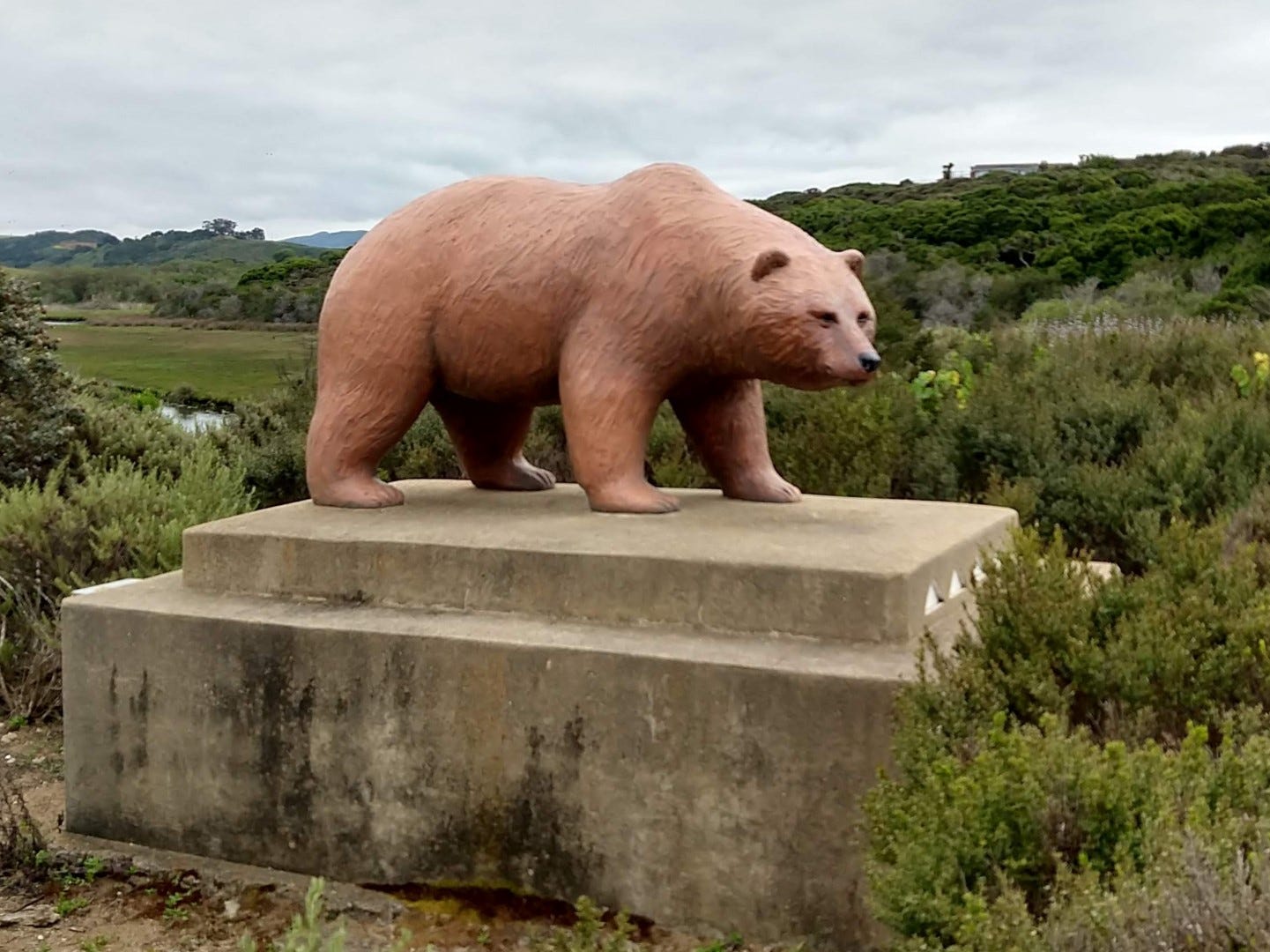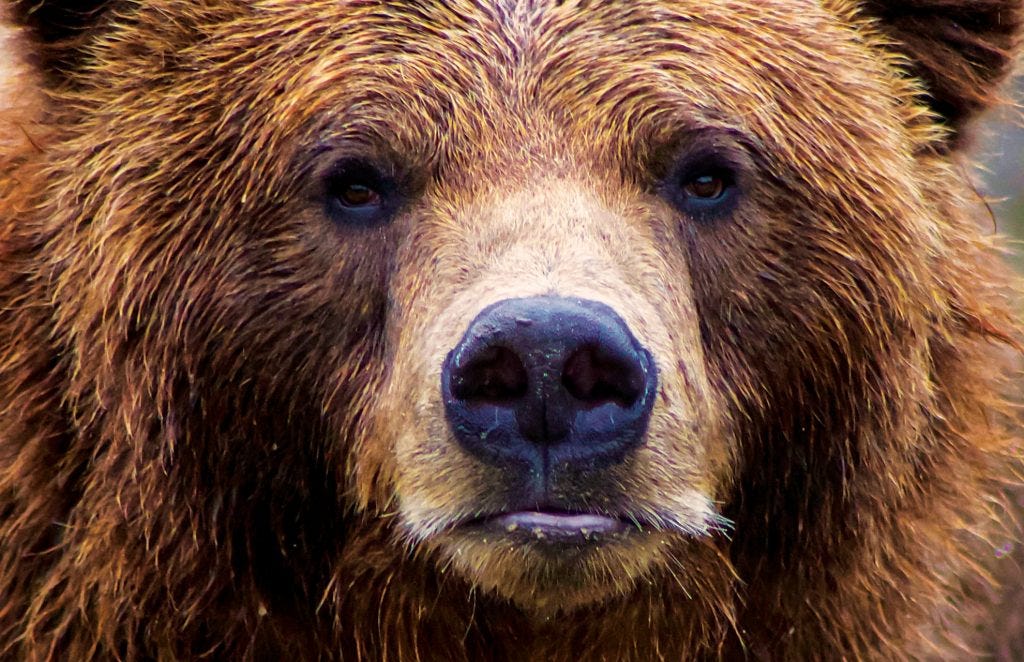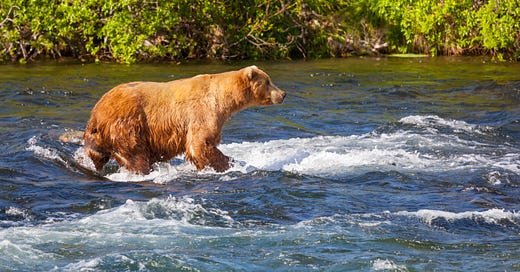The Return of the Grizzly
Scientists consider reintroducing the iconic brown bear into California.
I remember about 10 years ago being struck by the fact that my grandchildren would never see a California grizzly bear—they are extinct. It seemed devastatingly sad to me, although I’m not sure I want any of my grandchildren to run into a grizzly bear. Then, before my brain caught up with my emotions, I had a moment of relief, thinking they could see them at a zoo. No. They can’t see them in the zoo. California grizzly bears are extinct. They no longer exist—not in the wild and not in zoos. How could we have let this happen?
California’s flag has included the grizzly bear since the June 1846 uprising in Sonoma, California, nicknamed the Bear Flag Revolt. The current flag has been California’s state flag since 1953, the same year the grizzly bear was officially named California’s state animal. More than 10,000 grizzly bears lived in California before European settlers arrived and began to systematically kill them off for food, to prevent them from killing livestock, and out of fear.

By the time the California grizzly bear became the state animal, it was already extinct. The second-to-last California grizzly bear was shot and killed in Tulare County in 1922. Two years later, the last grizzly was spotted in Sequoia National Park but was never seen again. The massive brown bear has been extinct since 1924.
One of the places Grizzlies lived was in what is now known as Los Osos (literally, “The Bears”), a town sitting 10 miles northwest of me at the entrance to Montaña de Oro State Park. A giant statue marks the spot where the first encounter between Spanish settlers and a grizzly bear is said to have occurred in 1769.

In a fascinating article called “A Grizzly Bear Comeback?” from my favorite magazine, Alta Journal, journalist Ajay Orona writes about plans to reintroduce the bear into California. Although grizzlies are extinct in California, there are 1,800 living in other parts of the United States. Researchers estimate California’s habitat could support a population of 500 bears, but so far the U.S. Fish and Wildlife Service has rejected petitions to return the bears to California.
One of the obstacles to bringing the grizzly back to California is the isolation the California bears would experience from other bear populations. This would lead to inbreeding, making the bears vulnerable to disease and less able to adapt to changes in the environment, such as global warming. Add to that the fact that grizzly bears can weigh up to 1,000 lbs. and are apex predators, meaning they are at the top of the food chain and have no natural predators of their own. I’ve seen Cocaine Bear, and I have to admit it’s a scary thought.

The return of grizzly bears to California could happen in the future, though. There are reasons to return them to their home. They were an important part of California’s ecosystem, controlling the populations of fish and herbivores such as deer, which in turn controlled plant growth.
“U.S. Fish and Wildlife could decide at any time to green-light a reintroduction project. If it did, the groundwork conducted by [U.C. Santa Barbara environmental studies and history professor Peter] Alagona and the California Grizzly Research Network would most likely make California among the federal government’s first testing sites. ‘California is actually a wildlife-friendly state. If there were a state to reintroduce grizzlies, it would be the one,’ says Noah Greenwald [of the Center for Biological Diversity].”
My grandchildren have seen grizzly bears. They aren’t technically California grizzly bears because they came to California from other places. My two-year-old granddaughter Louise saw two North American grizzly bear brothers at the San Diego Zoo last summer. They were sent to the zoo as cubs, from near Yellowstone National Park, because their mother had taught them to look for food near humans. They were not born California grizzly bears, but they’re California grizzly bears now.
It seems possible the iconic bears may roam free in California once again, in my grandchildrens’ lifetime. And while I remain sad about the loss of them, I see now that the idea of bringing them home is more complicated than dropping them off in the California wilderness.




